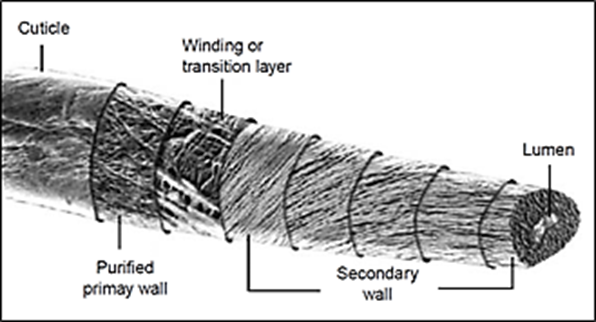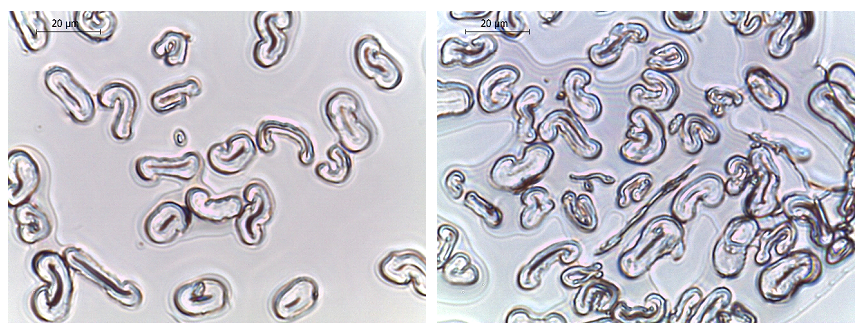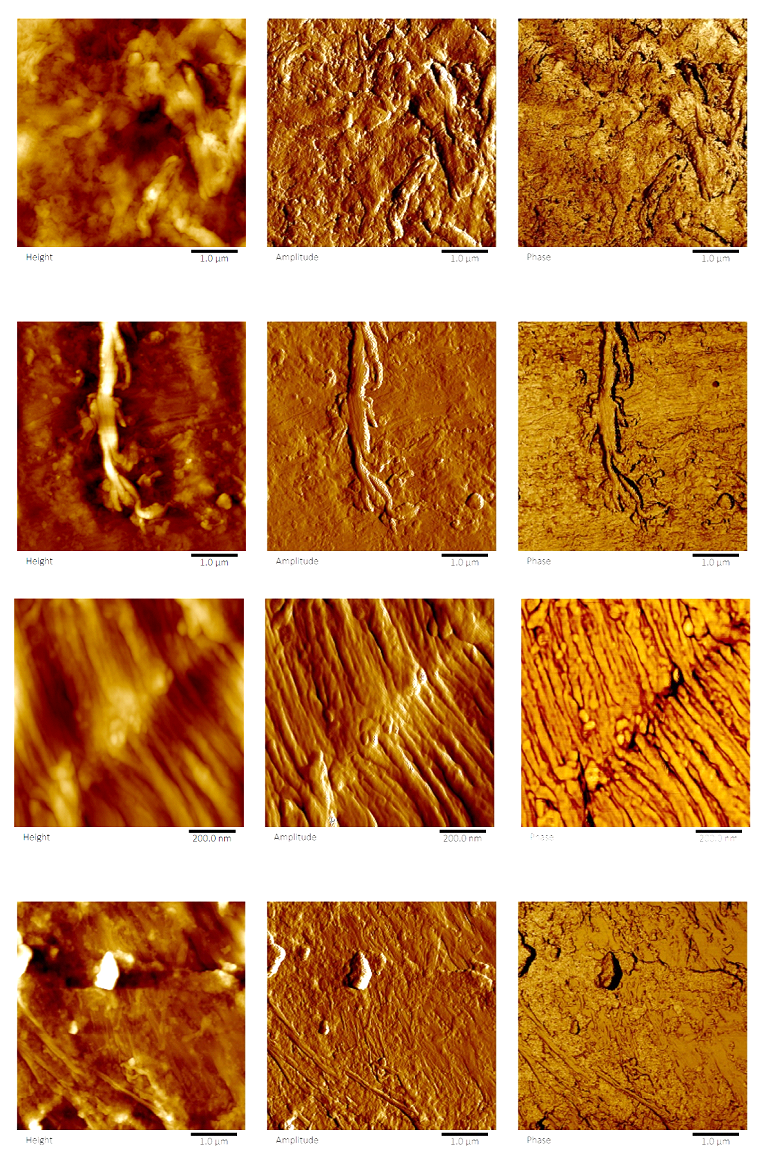Microscopic analysis of new and historic cotton textiles pre- and post-bleaching
- Abstract number
- 321
- Presentation Form
- Poster
- Corresponding Email
- [email protected]
- Session
- Poster Session 3
- Authors
- Miss Rana Salem (3), Dr Mahesh Uttamlal (2), Mrs Karen Thompson (1)
- Affiliations
-
1. Centre for Textile Conservation and Technical Art History, University of Glasgow
2. Department of Applied Science, Glasgow Caledonian University
3. Department of Applied ScienceGlasgow Caledonian University
- Keywords
AFM, Cotton, Textile, Conservation
- Abstract text
This poster describes the microscopic investigation of cotton fibres pre-and post-bleaching using oxidative and reductive methods commonly employed by museums for conservation of historic textile materials.
All historical textile materials (including tapestries, carpets, decorated textiles, and clothing), most commonly protein and/or cellulose in composition, will degrade over time due to exposure to dirt, microorganisms and environmental conditions, i.e. humidity, oxygen and pollutants [1]. Conservators in museums throughout the world are responsible for the care of these textiles, which are important sources of cultural heritage. Such artefacts are vital to preserve for future generations. The conservation process is generally determined by the condition of the textile fibre, dye composition, and age, construction, as well as the object’s history of use and storage conditions. For cellulose textiles, aqueous immersion techniques can be used for removing stains and yellowing using both oxidizing (e.g. H2O2) and reducing (e.g. NaBH4) agents.
Figure 1: Schematic diagram of the cotton fibre structure.
Raw calico (plain weave cotton fabric), (sourced from Whaleys Ltd) and historic (shirt circa. 1900) cotton textile were bleached using NaBH4 (1%) 16 hours by a submerging and low agitation [1]. Samples were removed, washed and dried in air on acid free blotting paper. Cross sections of fibre threads were prepared by setting in resin then slicing using a microtome directly onto microscope slides.
Analysis of the cross sections were performed using optical microscopy techniques. Atomic Force Microscopy were performed on the Dimension 3100 (Veeco Metrology) Nanoscope IV Scanning Probe Microscope.
Figure 2: Cross section of raw cotton fibres, (left) pre-cleaning (right) post bleaching.
AFM images of the outer walls of raw cotton fibres pre- and post-bleaching with NaBH4 are shown in Figure 3. The pre-bleached sample shows an intact outer amorphous cellulose structure. Post-bleaching images clearly reveal a crystalline cellulose structure characteristic of the secondary walls (Figure 3). The AFM images of the historic shirt indicate that some of the amorphous layer have been removed through previous washing, wear and tear to reveal the inner crystalline fibre structure.
Figure 3: AFM images (left) height, (middle) amplitude, (right) phase of cotton fibre outer surface using TappingMode™ AFM. (top) raw cotton pre-bleaching (2nd and 3rd row) raw cotton post-bleaching, (bottom) historic cotton shirt (circa. 1900).
The use of imaging, in particular AFM, has shown that the use of bleaching using NaBH4 can have a detrimental effect on the integrity of cotton fibres. The bleaching time used here was far in-excess of routine use of 15 minutes however, short periods is still capable of causing irreversible damage. This work will have implications for textile conservation throughout the world.
- References
[1] Ringgaard, M. “An Investigation into the Effects of Borohydride Treatments of Oxidised Cellulose Textiles (2002).” In Changing Views of Conservation, edited by Mary M Brooks and Dinah Eastop. 386-400. Los Angeles: The Getty Institute, 2011.



